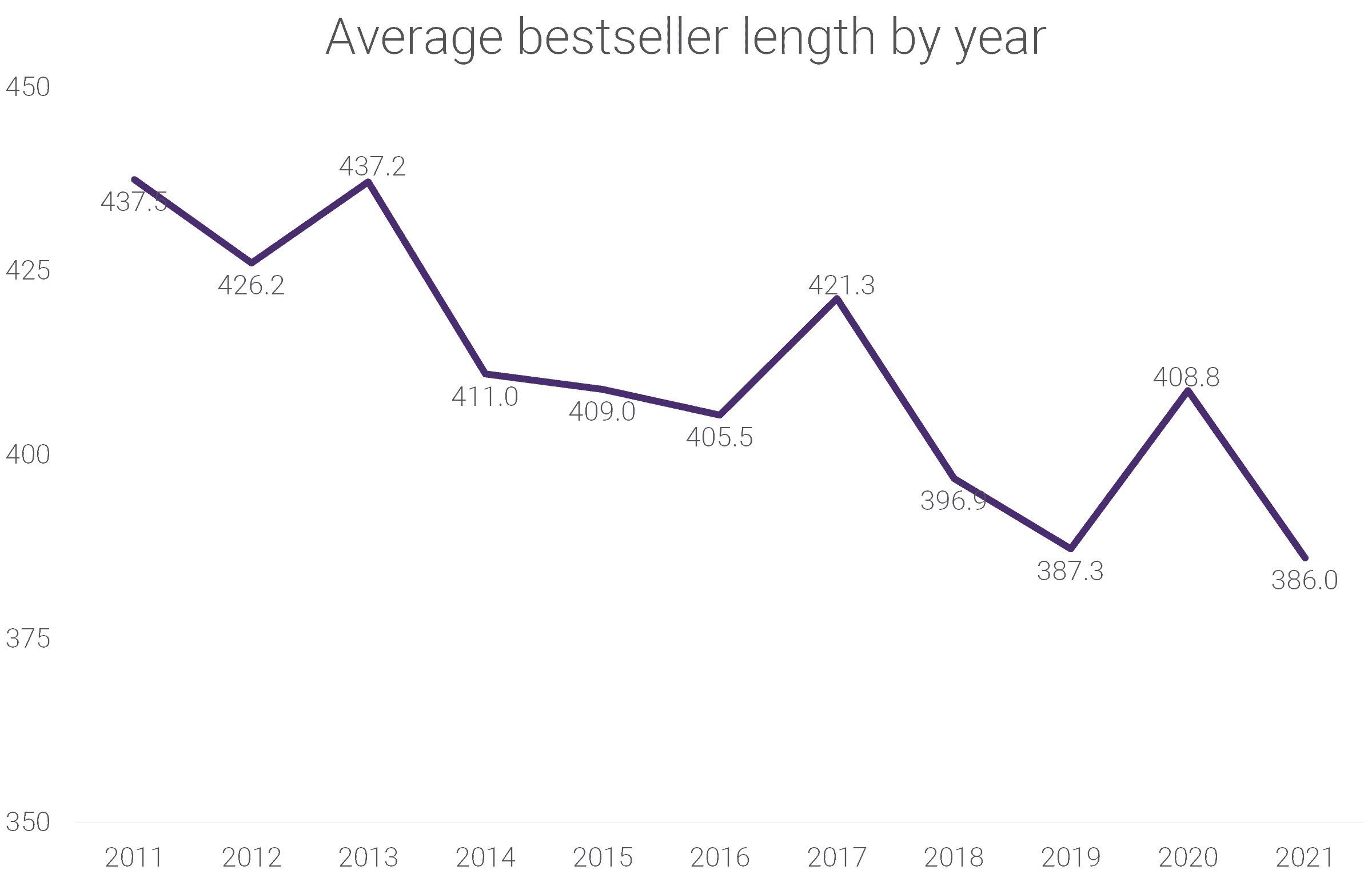We analyzed 3,444 titles that were ranked top3 on NYT weekly bestseller lists from 2011 to 2021 to examine how the length of the most popular books changed over time. Both fiction and nonfiction titles were analyzed. The full methodology is provided at the end of the article.
Key findings:
- Bestsellers are getting shorter – the average length of the NYT bestseller decreased by 51.5 pages from 2011 to 2021, from 437.5 to 386 (11.8%).
- Long books (over 400 pages) are disappearing – the share of long bestsellers went from 54% in 2011 to 38% in 2021, a 30% drop.
- Long books stayed 4.4 weeks longer on the bestsellers list than short books (under 400 pages) until 2016. Since 2016, short books have been on the list 1.9 weeks longer than long books.
- People read longer books during winter – bestsellers are 35 pages (8.2%) shorter from April to September (392 pages) compared to October through March (427 pages).
Bestsellers are getting shorter over time
During the second decade of the 21st century, the average length of the NYT bestseller dropped by more than 50 pages. From 2011 to 2017, the average bestseller was over 400 pages long each year. Since 2018, that was the case only in 2020, a year heavily affected by the pandemic.
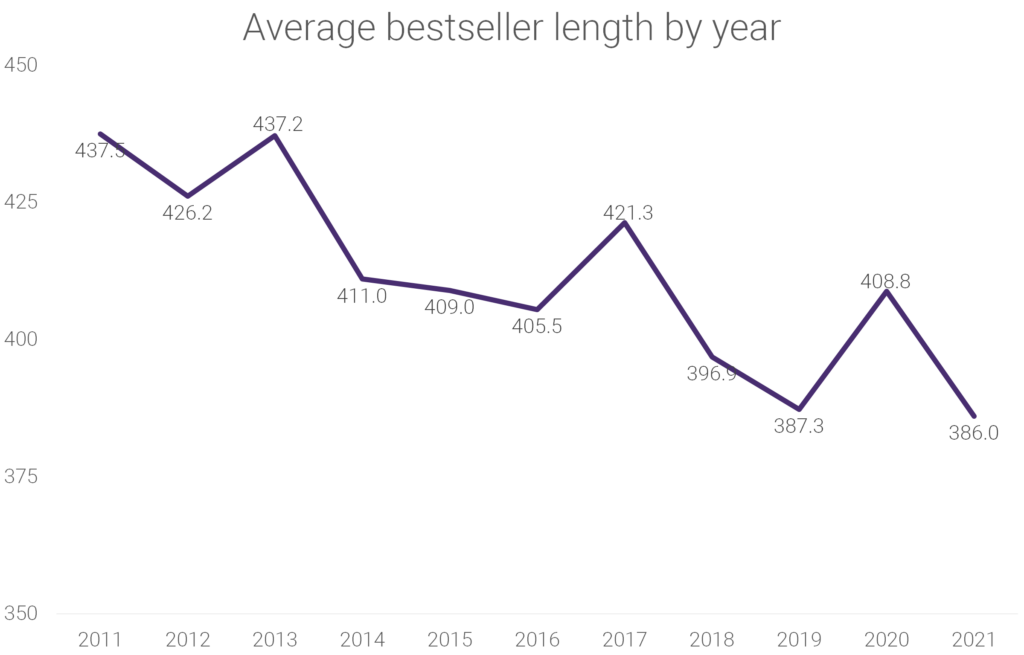
The median value of bestsellers length also shows a decline over time, with a 32-page drop from 2018 to 2021.
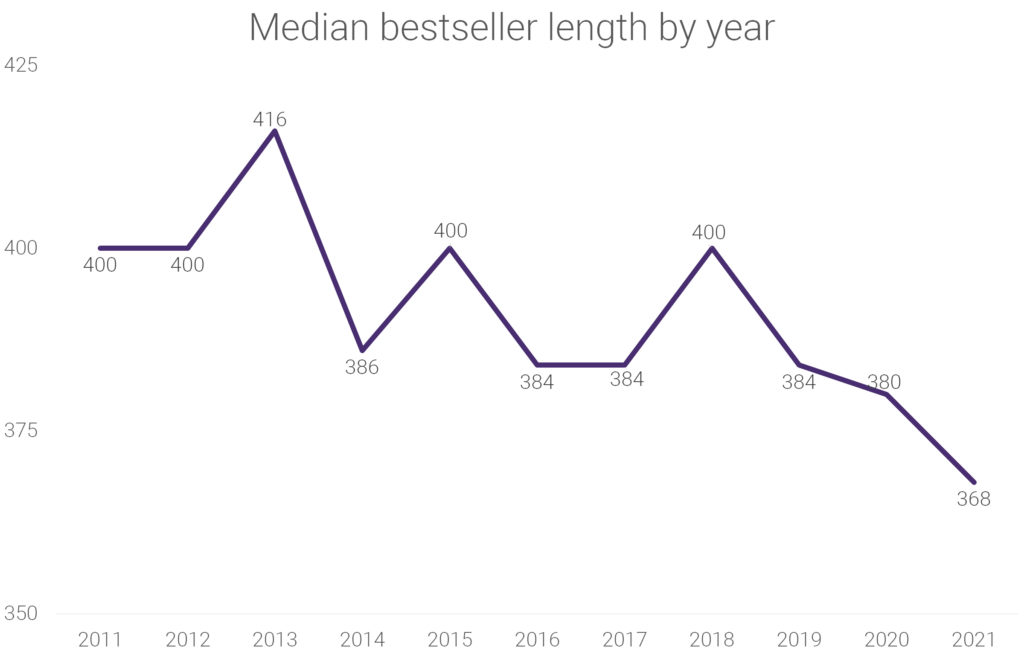
Over 50% of bestsellers were over 400 pages in 4 of the first 5 years (2011-2015), and in only 1 of the last 5 years.
In 2021, only 38% of bestselling books were more than 400 pages long, which is a 29.5% decline compared to 2011.
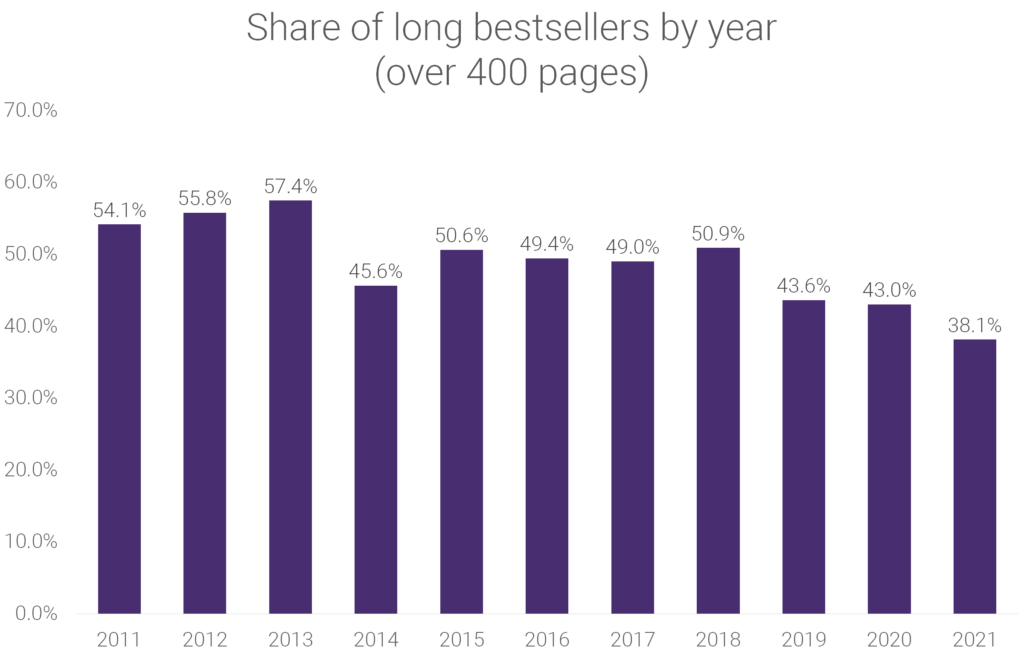
From 2011 to 2015, long books remained on the bestseller list for 9.4 weeks on average. Over the same period, short books averaged only 5 weeks on the list.
Since 2016, the trend has reversed. Short books have spent 7.8 weeks on the list on average, compared to just 5.9 weeks for long books.
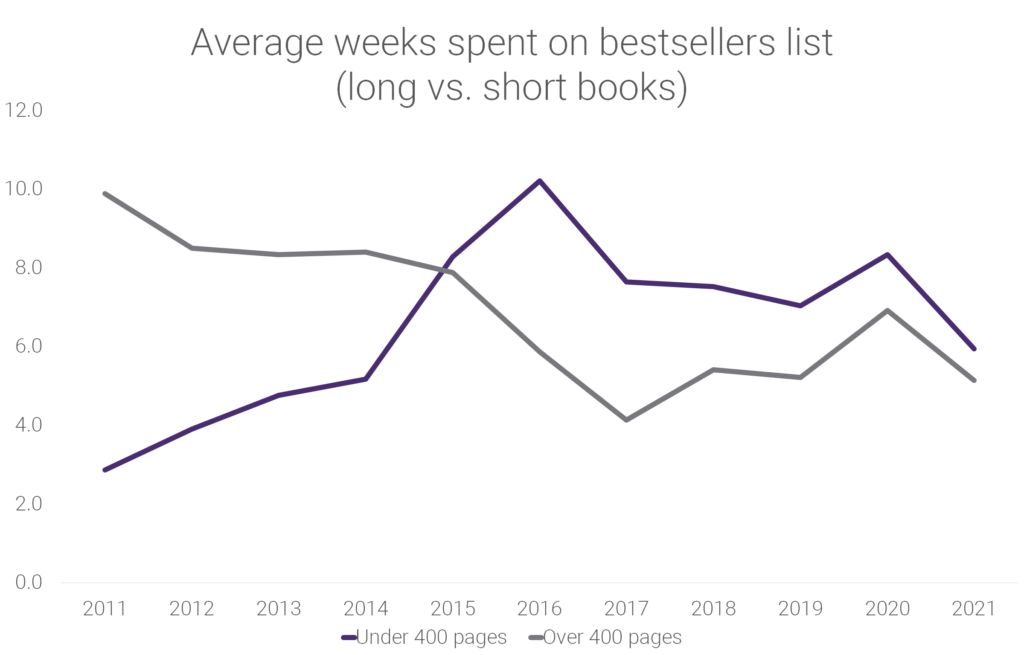
| People may argue that shortening books equates to dumbing down but we have found no evidence to support that. If you do wish to expand your vocabulary you can view our WordsLists. |
People read longer books during winter
We looked at the average length of bestsellers by month. The results show that readers tend to read longer books during the first/last 3 months of the year, while bestselling books during spring and summer tend to get shorter.
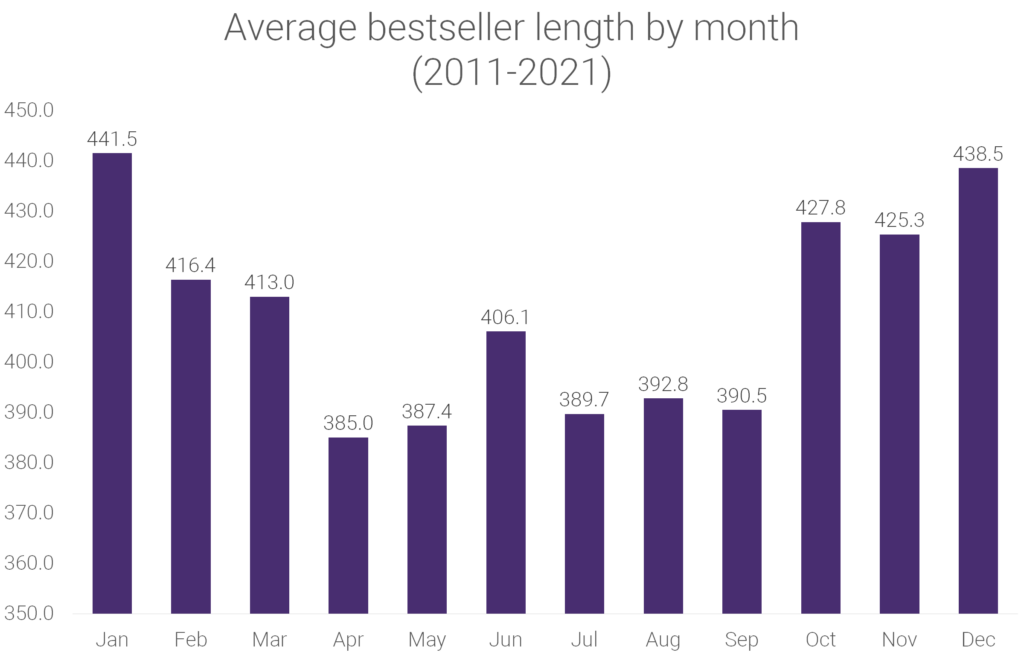
January and December are the months when readers buy the longest books. Bestselling books are on average 35.2 pages shorter from April – July compared to October – March.
Conclusion
The digital age brought a huge increase of various types of content fighting for people’s time and attention. People have more options than ever on how to spend their time. This variety of things to do alone is one of the reasons why reading time is in decline over the years.
With these factors in mind, our hypothesis was that readers are choosing to buy shorter books as the years go by. Results of our analysis suggest that this is the case, as best-selling books got 11.8% shorter over the last decade.
Methodology
● The sample includes the 3,444 hardcover, fiction and non-fiction titles that have
appeared in the top 3 positions of the New York Times bestseller list from 2011 to 2021.
● For each title, we collected data on: the number of pages, when it first appeared on the
NYT bestseller list, and how many weeks it stayed on the list for.
● This data was then used to analyze the average length of a bestseller by year and the
seasonal fluctuations in the length of bestselling books
Author Bio

Dimitrije Curcic
Dimitrije is Research Director at WordsRated. He has years of research experience in environmental engineering, sports, gender and racial equality. His work has been featured on FiveThirtyEight, Forbes, Spiegel, and L’Equipe, among others. You can reach him at dimitrije@wordsrated.com

